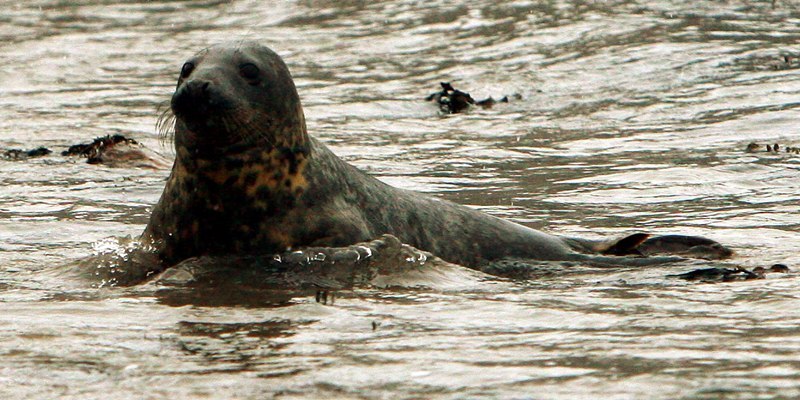A spate of mysterious seal deaths is being blamed on boats rather than sharks.
Scientists investigating spiralling “corkscrew” cuts on carcases washed up at St Andrews Bay and in the Tay and Forth estuaries have ruled out marine predators as the cause of the unusual lacerations.
Similar cases around a Canadian island have been put down by scientists there to the Greenland shark.
Researchers at St Andrews University’s Sea Mammal Research Unit (SMRU), who are working with the RSPCA and the Scottish Agricultural College, have also ruled out deliberate mutilation, illegal traps and fisheries as potential causes.
They say that the seals are most likely to be have been killed by ducted propeller systems on ships operating in shallow coastal waters.
Dr David Thompson is leading the study and he said, “Investigations have revealed a number of features that show the injuries are entirely consistent with the animals being sucked through large ducted propellers.
“Our methods included scaled simulations using models that show how the spiral injuries can be created, as well as fine-scale observation of the injuries themselves that show the lacerations were made by the seals rotating against a smooth-edged blade while at the same time being dragged past the blade by a powerful force.
“Most diagnostic of all has been the imprint on some animals of the serrated ‘rope cutter’ that is present on most of these types of ducted propellers to stop ropes getting entangled in the propellers.”
Dismissing the Greenland shark theory, he said, “We are certain that this is not the cause of the injuries here and are also of a view that many of the cases from Canada are unlikely to be caused by sharks.”
Since the first corkscrew lacerations were reported in August last year the research team has studied more than 30 carcases. The single lacerations start at the head and wind in a smooth spiral around the length of the body.
Preliminary evidence suggests that cases may be isolated to specific regions where ships with a particular drive system are operating in shallow waters but it is not yet understood why the seals would place themselves at risk of being sucked into the propellers in the first place.
SMRU and Scottish Oceans Institute director Professor Ian Boyd said, “It is slightly suspicious that we have observed these injuries in places where researchers with appropriate knowledge are most likely to find them, which leaves me thinking that we might only be seeing the tip of the iceberg.
“But we hope that the current observations are an isolated case reflecting very specific circumstances that, once understood, can be avoided in future through simple changes to the operational procedures of the vessels involved.”
